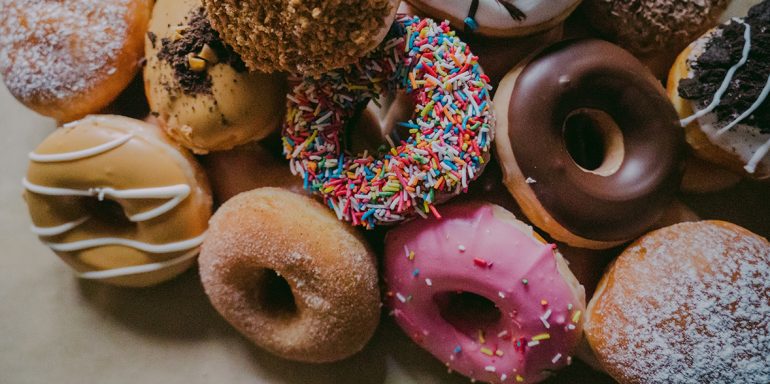
How to find hidden sugar
Every child knows that chocolate and sweets are unhealthy. However, sugar is also in food where we would not expect it to be.
Did you know that there are 35 sugar cubes in a pack of dried apples? And that a glass of Granini orange juice has the same amount of sugar as an equal-sized glass of Coca Cola? The fact that sticky donuts and creamy cakes are unhealthy is well known. However, people also consume sugar without being aware of it in many cases: hidden sugar is in food which we wouldn’t consider to be particularly sweet.
If no energy is required at the moment, the deposits (glycogen stores) are filled and the body forms fat cells. This can result in overweight and secondary diseases like diabetes, cardiovascular and respiratory illnesses. In addition, having a high blood sugar level on a regular basis damages vessels and nerves.
The World Health Organization (WHO) recommends that people consume a maximum of ten per cent of their daily calories in the form of sugar. With a basic requirement (in German) of 2,000 calories, that would be 50 grams at the most. So anyone who has a glass of orange juice (26.4 grams) and a fruit yoghurt (17 grams) for breakfast has already almost reached this level.
How to find hidden sugar
It is therefore also worth taking a closer look at supposedly healthy food. If you want to check to see how much sugar is in a particular product, you have two options:
In most cases, sugar is listed separately in the nutrition table under carbohydrates. Otherwise, sugar and other types of sugar are classed as carbohydrates.
Nutrition tables can be left off packaging but it is compulsory to specify the ingredients. The list of ingredients can provide information on sugar content. Nevertheless, this is only the case if you know that sugar goes by different names including sucrose, beet sugar, whole cane sugar, coconut nectar, flower nectar, invert sugar, molasses, all types of syrup, honey, dextrose, glucose, fructose, fruit sugar, maltose, pear juice concentrate (Birnel) or other juice concentrates.
The higher up the list the sugar, the more of it the product contains. But beware: if different sugars are used in small quantities, they fall to the bottom end of the list of ingredients.
What responsibilities does the state have?
The Federal Office of Public Health (FOPH) has classified the continuously increasing sugar consumption as a serious public health risk. The new Foodstuffs Ordinance, which came into force on 1 May 2017, promises consumers better protection against deception. However, precisely this is not the case – the Beobachter magazine reported this issue in its article "Die Zuckerlobby hat gewonnen" ("The sugar lobby has won"). For instance, although sugar is declared on the list of ingredients as stipulated, in many cases it is not included in the nutritional information, the so-called food profile. The lack of exact quantity specifications is explained away as being due to "a lack of space on the label".
Personal responsibility
Ultimately, consumers are personally responsible for critically examining their own consumption. Where reducing sugar consumption is concerned, the greatest room for improvement lies in less self-deception.
This article was first published on Beobachter Gesundheit (in German): Advice, tips on prevention and well-being as well as information on illnesses and symptoms.


Newsletter
Find out more about current health issues every month and get all the information you need about our attractive offers from all Helsana Group companies * delivered by e-mail to read whenever it suits you. Our newsletter is free of charge and you can sign up here:
We did not receive your information. Please try again later.
* The Helsana Group comprises Helsana Insurance Company Ltd, Helsana Supplementary Insurances Ltd and Helsana Accidents Ltd.